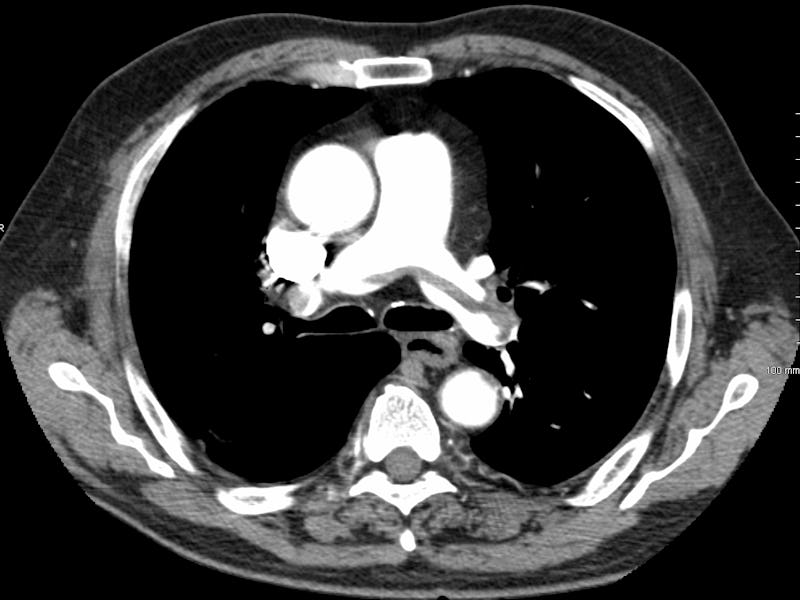What Is Pulmonary Embolism? American Airlines Death Linked to Common Risk
It's a major risk of air travel.

Three days after Brittany Oswell suffered a pulmonary embolism on an American Airlines flight, the 25-year-old was declared brain dead and taken off life support. Pulmonary embolism (PE) is one of the biggest medical dangers on planes, and Oswell’s family alleges that the airlines could have done more to prevent it.
In April of 2016, Oswell was on a flight from Hawaii to South Carolina (with a connection in Dallas) when she suffered PE, or an artery blockage in the lungs. Oswell’s family is now suing American Airlines, alleging that the medical equipment aboard the plane was insufficient and that the crew ignored a doctor’s demands to make an emergency landing before reaching Dallas.
A deep vein thrombosis as seen in the right leg is a risk factor for pulmonary embolism
A pulmonary embolism is often caused by blood clots in the legs that travel to the lungs. This is not uncommon among travelers, seeing as blood clots can form in the deep veins (veins below the surface that are not visible through the skin) when the traveler is sitting for long periods of time. Known as venous thromboembolism (VTE), these deep-vein blood clots have become a systemic problem in air travel, as noted in various studies published with the U.S. National Library of Medicine. Passengers who notice swelling in the feet and legs when they are on a long flight should be especially cautious. These blood clots may dissolve on their own or break off and travel to the lungs, which is what happened to Oswell.
The Federal Aviation Administration requires airlines to carry equipment that includes nitroglycerine, epinephrine for allergic reactions, defibrillators, CPR masks, and IV sets, but most equipment treats allergic reactions or heart problems. Oswell would have needed anticoagulant treatment, among other medical attention, that her family alleges was not available on the flight despite the commonality of blood coagulation on flights.
“We take the safety of our passengers very seriously and we are looking into the details of the complaint,” American Airlines said in a statement. The company has yet to formally respond to the lawsuit or discuss what, if any, anticoagulation treatment will be available on flights going forward.
In the meantime, the CDC recommends that travelers do small exercises using the calf muscles to reduce the risks of blood clots. To improve blood flow, extend legs straight out if possible and flex the ankles. If leg extension isn’t an option (which, sadly, is most of the economy seating) the CDC suggests pulling each knee up toward the chest and holding it there with your hands on your lower leg for 15 seconds. Repeat this motion up to 10 times.